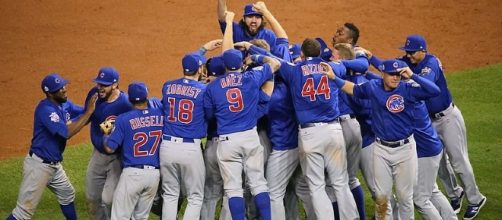The Chicago Cubs were one of the most active teams during this year's trade deadline, making moves to acquire veteran pieces to improve the MLB roster. The defending World Champs had a mediocre first half before starting the second half 13-3 and moving into first place last week, and since the all star break there have been three key additions to the club in Jose Quintana, Justin Wilson and Alex Avila.
These guys obviously came at a cost. A number of top prospects were sold of to get these veteran pieces, which now puts the Cubs as a team without any top-100 prospects.
It can seem like a terrible thing, but in the position the team is in now, it is not. This team is built to win right now, and every improvement made to this ballclub is worth making even if it costs prospects.
Rebuilding teams (like the Cubs were a few years ago) are the ones who have to worry about having prospects and grooming them, this team just won the World Series and are in a playoff race, and it does no good to worry about prospects when your big league club is in need of reinforcements to win.
Times change as team does
When Theo Epstein came to rebuild the entire organization, prospects were essential to have in order to groom and create a young team that sustain contention over a number of years.
From 2011 to 2015 guys like Kris Bryant, Kyle Schwarber, Albert Almora, Ian Happ, Jorge Soler, Javier Baez, Willson Contreras and Addison Russell worked in the Cubs farm system to the majors as they had one of the best. Anthony Rizzo, the cornerstone of the franchise even spent some time in AAA in 2012 when he was traded over from the Padres.
The farm was great — now they are in the majors. The purpose of having a farm system is to grow players to the majors to lead to MLB success and also using some to trade for other assets that will aid a team immediately. This is exactly what the Cubs have done since 2011, they got their key assets to the majors with most having contributed to the 2016 World Championship and traded others for MLB reinforcements.
The team grew and became a playoff team by 2015 and since that time the team is not longer selling, but buying.
What was traded away and for what
The first big trade of 2017 was getting Jose Quintana from the White Sox. Quintana being one of the most consistent starting pitchers in baseball under a fantastic controllable deal through 2020 at the age of 28 is exactly what the Cubs needed.
Not only a talented guy, but one that will contribute to the MLB club for several years during a window the team is built to contend. Surrendering top-prospects Eloy Jimenez (#7 on MLB.com) and Dylan Cease (#67 on MLB.com) was absolutely necessary and justified for this. Both assets were in A ball which is good to groom for a rebuilding White Sox team, but does not do the MLB team any good that is trying to win right now, Quintana helps win now.
In addition to that, prospects Jeimer Candelario (#92 on MLB.com) and Issac Paredes were sold to Detroit for veteran catcher Alex Avila and reliever Justin Wilson. With the departure of David Ross and Miguel Montero, the Cubs lacked a veteran catcher behind the 24-year old Willson Contreras and Alex Avila fills that void.
Avila (30) has been in the league nine years and is having a nice year offensively with a .274/.394/.869 slash. The bullpen also gets a strong late-inning lefty in Justin Wilson (29) who has a 2.68 ERA and 0.942 WHIP. Candelario played a few games with the MLB club this year but has no room with the established infield of Bryant, Russell, Baez and Rizzo for years to come, so again he was doing no good being stuck with the Cubs franchise.
The team is still young
The Cubs are in a position to keep their talented core in tact for years and not with a bunch of old players. The core of Baez (24), Bryant (25), Contreras (25), Rizzo (27), Russell (23) and Schwarber (24) are under team control until 2022; Almora (23) controlled through 2019. They are young and will be around after already winning a World Series. Most of the position prospects established in the system for at least a year (not counting 2017 draft picks) were blocked from having a position with the MLB team anytime soon because of the young MLB core being locked up.
At this point, it is best to fill the needed positions than keeping prospects just to keep them. Theo Epstein successfully made these moves in 2017 without giving up an MLB asset, that should be applauded rather than criticized.
The farm will have time to be replenished with drafts and international signings with the team playing contending baseball as the yearly goal.
Perspective from GM Jed Hoyer after #Cubs flipped more prospects: "I’m still struck by how we’re always the youngest team on the field.”
— Patrick Mooney (@CSNMooney) July 31, 2017


